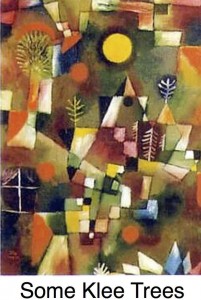Today we continue with our exploration creativity, imagination and spontaneity. Here Keith Johnstone shakes the foundations of our education system. From his 1979 work ‘Impro’ published by Faber and Faber. (In parts of Germany students are still inquisitive)
Most schools encourage kids to be unimaginative. The research so far shows that imaginative children are disliked by their teachers. Torrance gives an eye-witness account of an ‘exceptionally creative boy’ who questioned one of the rules in the textbook: ‘The teacher became irate, even in the presence of the principal. She fumed, “So! You think you know more than this book!”’ She was also upset when the boy finished the problems she set almost as quickly as it took to read them. ‘She couldn’t understand how he was getting the correct answer and demanded that he write down all of the steps he had gone through in solving each problem.’
When this boy was transferred to another school, his new principal telephoned to ask if he was the sort of boy ‘who has to be squelched rather roughly’. When it was explained that he was ‘a very wholesome, promising lad who needed understanding and encouragement’ the new principal exclaimed ‘rather brusquely, “Well, he’s already said too much right here in my office!” ‘ (E.P. Torrance, Guiding Creative Talent, Prentice Hall 1962)
One of my students spent two years in a classroom where then teacher had put a large sign over the blackboard. It said ‘Get into the “Yes, Sir” attitude.’ No doubt we can all add further anecdotes. Torrance has a theory that ‘many children with impoverished imaginations have been subjected to rather vigorous and stern efforts to eliminate fantasy too early. They are afraid to think.’ Torrance seems to understand the forces at work, but he still refers to attempt to eliminate fantasy too early. Why should we eliminate fantasy at all? Once we eliminate fantasy, then we have no artists.
Intelligence is proportional to population, but talent appears to not be related to population numbers. I’m living in a city at the edge of the Rocky mountains; the population is much greater than it was in Shakespearian London, and almost everyone here is literate, and has had many thousands of dollars spent on his education. Where are the poets, and playwrights, and painters and composers? Remember that there are hundreds of thousands of ‘literate’ people here, while in Shakespeare’s London very few people could read. The great art of this part of the world was the art of the native peoples. The whites flounder about trying to be ‘original’ and failing miserably
You can get a glimmer of the damage done when you watch people trying out pens in a stationers’ shop. they make feeble little scribbles for fear of giving something away. If an Aborigine asks us for a sample of Nordic art we’d have to direct him to an art gallery.  No Aborigine ever told an anthropologist, ‘Sorry, Bass, I can’t draw.’ Two of my students said they couldn’t draw, and I asked, ‘Why?’ One said her teacher had been sarcastic because she’d painted a blue snowman (every child’s painting was pinned up on the walls except hers). The other girl had drawn trees up the sides of her paintings (like Paul Klee), and the teacher drew a ‘correct’ tree on top of hers. She remembered thinking ‘I’ll never draw for you again!’ (One reason for filling in the windows of the local schools here is that it’ll make the children more attentive!)
No Aborigine ever told an anthropologist, ‘Sorry, Bass, I can’t draw.’ Two of my students said they couldn’t draw, and I asked, ‘Why?’ One said her teacher had been sarcastic because she’d painted a blue snowman (every child’s painting was pinned up on the walls except hers). The other girl had drawn trees up the sides of her paintings (like Paul Klee), and the teacher drew a ‘correct’ tree on top of hers. She remembered thinking ‘I’ll never draw for you again!’ (One reason for filling in the windows of the local schools here is that it’ll make the children more attentive!)
Tomorrow Keith will give us more on being an artist.
